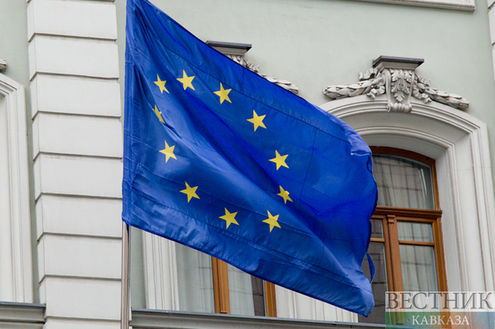Nothing has changed in Armenia as a result of 2012 in terms of the economy.
The negative balance of foreign trade remains one of the main characteristics of the Armenian economy and continues to increase, in spite export growth outrunning that of imports. In absolute terms, Armenia imports more goods than it exports. If 10 years ago, imports were 1.9 times higher than exports in absolute terms, in 2012 this figure rose to 2.9 times and is now about $3 billion. This, despite assurances from the government about the promotion of local producers, indicates the opposite, i.e. that the market continues to be dominated by foreign goods, including food products.
Economic growth, which remains at 6%, is traditionally supported by the sale of raw materials such ferrous metals and metal ores.
According to some experts, despite the fact that there has been a slight positive dynamic in the Armenian economy this year, the population remains dissatisfied with the current situation and does not sense any positive trends. With inflation at 4.5% this year there have been made no moves to raise the average wage of $280 per month, and nothing has been done to raise pensions, the highest of which is $100.
One of the paradoxes of the Armenian economy lies in the fact that this year once again food prices increased. Thus, the price of potatoes in Armenia grew by 11%, cabbage by 33%. Meanwhile, prices for food are falling: on the international stock exchange the average price of rice, sugar, potatoes fell approximately 15 %.
In 2012, the trend of active capital export continued in Armenia. The former Prime Minister Hrant Bagratyan believes that the export of capital in 2012 in Armenia amounted to about half a billion dollars and called this figure "alarming." One of the most negative characteristics of the Armenian economy is the so-called "shadow" economy, which according to the IMF accounts for 35% of GDP in Armenia. In fact, according to some experts, this figure is closer to 50%. Even if we assume that the ratio of taxes to GDP is 35%, the inability to collect taxes is obvious. However, small and medium-sized enterprises continue to play the major burden in paying taxes. Economists believe that the current mechanism of taxation will lead small and medium-sized enterprises in Armenia to bankruptcy. Another alarming tendency is the decrease in foreign investment in the Armenian economy. According to official data, foreign investment declined by 35% this year, direct investments - by 54%. According to the head of the research center "Alternative", Doctor of Economics Tatul Manaseryan, the decline in foreign investment was caused by political processes in the country. In 2012, Armenia held parliamentary elections, presidential elections are taking place in 2013. According to Manaseryan, a deceleration in investment with elections was expected and predictable.
Meanwhile, economic expert and representative of the opposition Armenian National Congress Vaagn Khachatryan is convinced that the decline in foreign investments can be regarded as a significant indicator ofthe unattractiveness of the Armenian economy. He stressed that there is no free market in Armenia, no competition, and that private property is not protected. Also, certain people play a great role in the economy, while capital does not favor such conditions, opting for freedom, law, and good governance.
A major problem is the lack of positive changes in the development of small and medium-sized businesses, which have a direct impact on the social sector. Thanks to the exclusive domination of monopolies in the economy, there are still very few economically-independent people in the country. Thus, 85% of Armenian export goods are produced by large businesses, particularly in the mining sector, while the share of small and medium-sized business is only 15%.
"This trend has been prevailing for many years now. Exports are dominated by the usual 25 kinds of products, which are manufactured by large businesses. This indicates that the country does not produce any
new types of products that could impact on exports," the director of "AE consulting" Gagik Margaryan believes. According to Margaryan, small and medium-sized businesses do not have unequal conditions to compete on the market and could benefit from targeted government loans to stimulate exports.
Although the government has repeatedly expressed its concerns about the dominating role of monopolies on the Armenian market, it has not done anything.
"The economic system in Armenia seems to aim at the destruction of small and medium-sized businesses. The economy is absolutely monopolized, oligarchs eliminate small businesses with the help of administrative resources and power," the former chairman of the Central Bank of Armenia Bagrat Asatryan believes.
Imports are also monopolized. There are no formal restrictions for importers, but everyone knows that if someone tries to break a tacit monopoly, there will be problems at the customs and other administrative bodies.
"It is almost impossible to diversify the Armenian economy due to corruption among the tax and customs authorities, the lack of equal competitive opportunities in the market and the availability of an oligopoly," the former representative of Armenia at the World Bank Aristomene Varudakis said.
The majority of the population remains in very harsh socio-economic conditions, while the country's economy depends only on a few dozen families. Despite the promises of the government, industry and high technologies are not developing. These problems can be resolved only if the authorities have the political will to do so and in 2012 there have been made no significant steps to overcome the main negative trends and tendencies in the Armenian economy.





